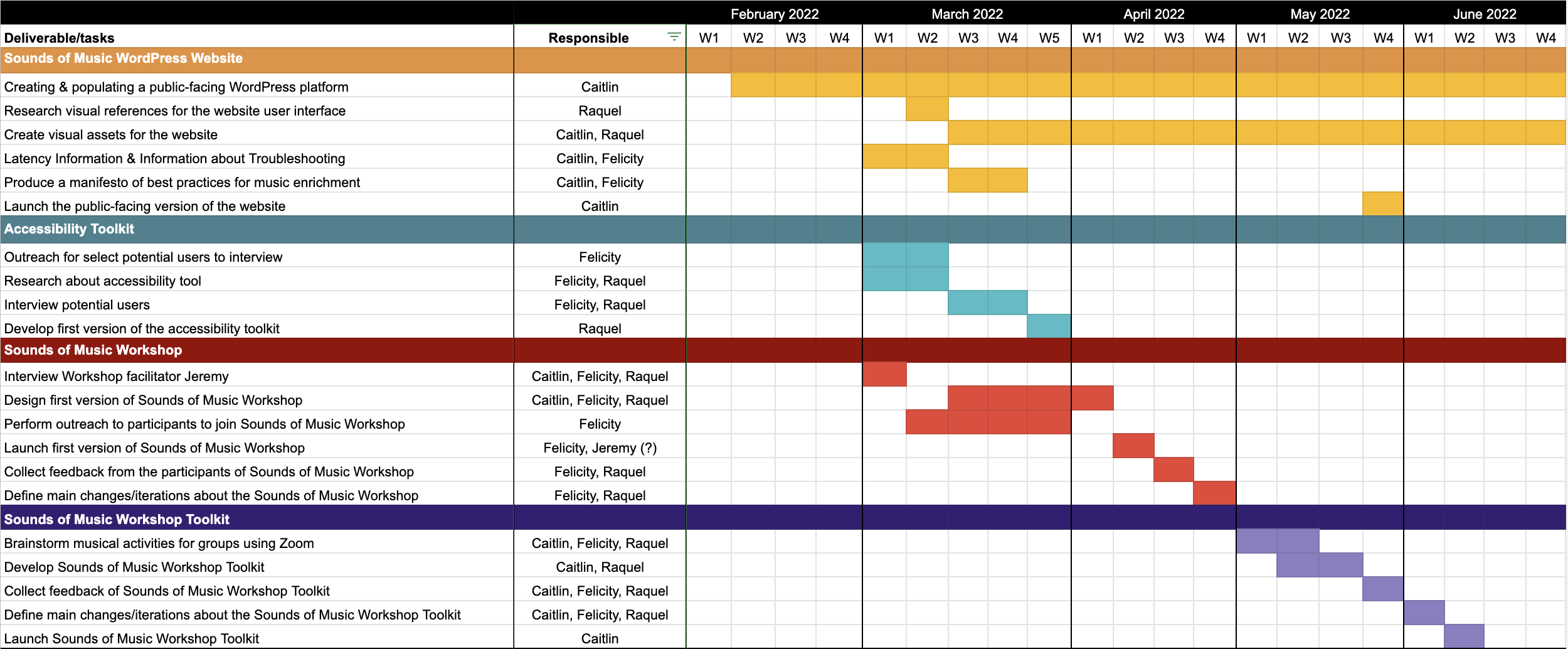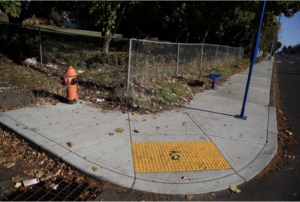Broken English: an ethnographic research about ESL Schools in NYC challenges during the Coronavirus pandemic in 2020
The field of Digital Pedagogy offers an excellent opportunity for us to rethink traditional education through digital media. Educommunication, on the other hand, is a field grounded in Latin American studies that analyzes practices related to the creation and strengthening of communicative ecosystems in educational contexts. Combining both lenses, the goal of this capstone project is to develop a critical view over the challenges faced by English as a Second Language (ESL) Schools in New York City during the Coronavirus pandemic, engaging students and teachers to rethink their online, hybrid, and in-person learning experiences. By building a web-based platform that exposes ethnographic research, combined with a series of learning resources and other sorts of engagement activities for students and teachers, we aim to form a community of learners engaged in educational practices that are more meaningful to their real-life challenges, encouraging expression, access to information and mutual care.
__
The question/problem it helps answer
In 2020, by the time the Coronavirus pandemic imposed the need for students and teachers to adapt to online learning, it became urgent to quickly shift to this new reality since it was something entirely new for most educational contexts. Under the feeling of uncertainty, anxiety, and great effort to overcome the educational crisis, one of the most challenging problems faced by educators was discovering how to engage students in remote classes. In English as a Second Language (ESL) programs in particular, this challenge was even bigger since students often have other intentions to attend classes besides learning English. The desire to dive into a new culture, be part of a community of friendship and support, or even find an affordable way to stay legally in the USA are considered as necessary (or even more) than developing a new skill.
According to EducationUSA, Intensive English Programs (IEP), one of the most common ESL programs, have classes designed for any level of English proficiency. In addition to that, these programs are significantly more affordable for international students when compared to other educational opportunities, such as graduate and undergraduate programs. Even though they require the attendance of at least 20 hours per week, they are one of the most accessible options for foreigners to stay longer in the USA legally, turning quite obvious the perception that their business’ success is more connected to VISA issues than to providing a genuine educational experience.
Given this context, when ESL programs faced the need to shift to online classes, the weaknesses of their educational experience became extreme. Fragilities regarding accessibility (difficulties in having proper devices and access to the internet), teaching preparation, and challenges in giving proper support related to health and financial issues required significant levels of resilience and flexibility from teachers, students, and schools’ staff. However, what kind of opportunity emerges from this experience? How can we rethink learning experiences in ESL programs in order to attend to students’ actual needs as foreigners in the USA? In this project, we will address these questions, which are still invisible among other issues that have been explored about the pandemic crisis.
__
The project’s intended audience
The primary audience of the Broken English project is teachers and students of ESL programs located in New York City.
__
Its contribution to DH & potential impact
Why is Broken English a relevant initiative to the Digital Humanities? The answer to this question has different perspectives. First, we should consider the changes that the DH scenario has faced over the years concerning its definition as a field of studies and practices. In the 2012 edition of Debates in the Digital Humanities, Matthew Gold presents this field as a place of discussion between those who relate Digital Humanities to an area that explores new digital tools to aid relatively traditional scholarly projects and those who believe that it is a disruptive political force, with the potential to reshape fundamental aspects of academic practice. In the 2019 edition, the same author demonstrates a need for scholars to engage in the second perspective, presenting the DH as a field that must evoque ethical, social, and political issues, transforming academic discussions more collaborative and exciting to the general public. In “A DH That Matters,” Gold and Klein point out that:
“Our work within the digital humanities is enabled by larger social, political, and technological systems. In the present moment, we need work that exposes the impact of our embeddedness in those larger systems, and that brings our technical expertise to bear on the societal problems that those systems sustain.” (GOLD, 2019)
In addition to that, the Digital Humanities has also seen the rise of initiatives related to digital pedagogy, presenting the urge to enlighten blind spots in this arena. According to Curtis Fletcher (2019), the DH has to open its eyes to explore issues related to educational technologies, especially to help develop ecosystems of humanities-tailored tools for teaching. During the Coronavirus pandemic, this topic has become even more relevant since distance learning turned into a trending topic in educational institutions.
By combining these perspectives, Broken English is aligned with how the Digital Humanities field has positioned itself, having an excellent chance to engage scholars and practitioners in participating in its development. In addition, it also brings a good opportunity to promote the dialogue between Digital Humanities and Educommunication, a field of studies and practices founded by the Latin American theoretical currents of liberating pedagogy, popular communication, and cultural studies (Mateus and Quiroz, 2017). As its focus is building open, dialogic, and creative communication ecosystems in educational spaces, breaking down hierarchical distribution of knowledge (Consani, 2010), the educommunicative approach is a good starting point to the work of rethinking ESL communities, as well as enriching discussions in the field of the DH related to digital pedagogy.
To complement these arguments, it’s essential to note that projects exploring the effects of the Coronavirus pandemic in the Digital Humanities, especially about ESL, are still to be explored.
__
Final product
Broken English project is envisioned as a web-based platform that presents a narrative divided in two parts:
Part 1: Understanding the problem – What are ESL programs, and what were the challenges they faced during the Pandemic through the lenses of students and teachers in New York City?
In the first part of the platform, users will be introduced to English as a Second Language programs (ESL). They will learn about the challenges that their communities (students, teachers, and staff) faced during the Coronavirus pandemic. In order to provide users a deep understanding of the problem through different lenses, it should present a combination of desk research, presenting secondary data based on government publications, websites, books, journal articles, etc., with insights from the ethnographic research conducted for the project. Along with this deep dive into the problem, the first part of the website will also present stories of some research participants exploring multimodal forms of expression such as photos, videos, audios, and texts.
Part 2: ESL reimagined
Based on the insights presented in the first part of the platform, the second part has the intention to present alternatives for the ESL communities to reimagine their relations as a community of learners. Initially, this part will provide educational resources aligned with their needs and contexts. In a second phase, after launching the platform and identifying early adopters, it will evolve to become an environment that promotes the connection of students and educators through initiatives such as in-person and online events.
Broken English will be developed using mainly ArcGIS StoryMaps, a story-authoring web-based application that enables users to share maps in the context of narrative text and other multimedia content. As it has a free version available for general users and a very user-friendly interface that offers the main features that Broken English intends to present, StoryMaps is considered a very affordable option that can also enable a fast launch of the platform.
__
Work plan
Broken English will be developed in two phases:
Phase 1: Pilot research, prototype, and testing
Phase 1 will be conducted by me and a small group of volunteers students from the Graduate Center, in an estimated period of four months. It will start in the form of pilot research, which will involve interviewing 8 to 12 people, including students and teachers, of two ESL schools based in New York City, which I have easy access to: New York Language Center and ZONI.
The result expected in this phase is the creation of an interactive prototype of the platform, which should be used for testing sessions with ESL students and teachers. The platform should present the results of the ethnographic research and a first version on a learning object/experience. The prototype of Broken English should use the free version of Story Maps.
Phase 2: Complete research and platform evolution
Based on the learnings acquired in Phase 1, Phase 2 consists in evolving the platform and communicating its launch for the general public. It will involve conducting more interviews with different ESL schools in New York City and implementing features. Providing learning experiences, resources, events, and a collaborative archive with pandemic stories from ESL communities are some of the ideas that can be developed in this phase, which can be confirmed as relevant for users in Phase 1.
With an estimated period of four months, Phase 2 should involve investments for a dedicated multidisciplinary team composed of specialists in qualitative research, learning experience design, and ESL programs, as well to have access to the full paid version of Story Maps.
__
Team
For the development of this project, It is expected to have a team formed by:
- one qualitative researcher, who will develop the ethnographic research with the ESL communities;
- one learning experience designer, who will work in transforming the research insights into educational resources for ESL communities;
- one English as a Second Language program specialist, who will collaborate with guidance for creating the learning resources.
My role in this team is to be the project director, with responsibilities for all aspects of the project.
__
References
Consani, Marciel. 2010. Como usar o rádio na sala de aula. São Paulo: Contexto.
Fletcher, Curtis. 2019. Educational Technology and the Humanities: A History of Control In Debates in the Digital Humanities 2019, edited by Matthew K. Gold and Lauren F. Klein. University of Minnesota Press. Available in: https://dhdebates.gc.cuny.edu/read/untitled-f2acf72c-a469-49d8-be35-67f9ac1e3a60/section/ed3d53dd-d7aa-4369-a41f-1098a121e41b#node-883c4791b5207ae8c432eafa638169a3138043a3. Accessed on 12/16/2021.
Gold, Matthew K. 2012. The Digital Humanities Moment In Debates in the Digital Humanities, edited by Matthew K. Gold. University of Minnesota Press. Available in: <https://dhdebates.gc.cuny.edu/read/untitled-88c11800-9446-469b-a3be-3fdb36bfbd1e/section/fcd2121c-0507-441b-8a01-dc35b8baeec6#intro>. Accessed on 12/16/2021.
Gold, Matthew K., and Lauren F. Klein. 2019. A DH That Matters In Debates in the Digital Humanities 2019, edited by Matthew K. Gold and Lauren F. Klein. University of Minnesota Press. Available in: <https://dhdebates.gc.cuny.edu/read/untitled-f2acf72c-a469-49d8-be35-67f9ac1e3a6




